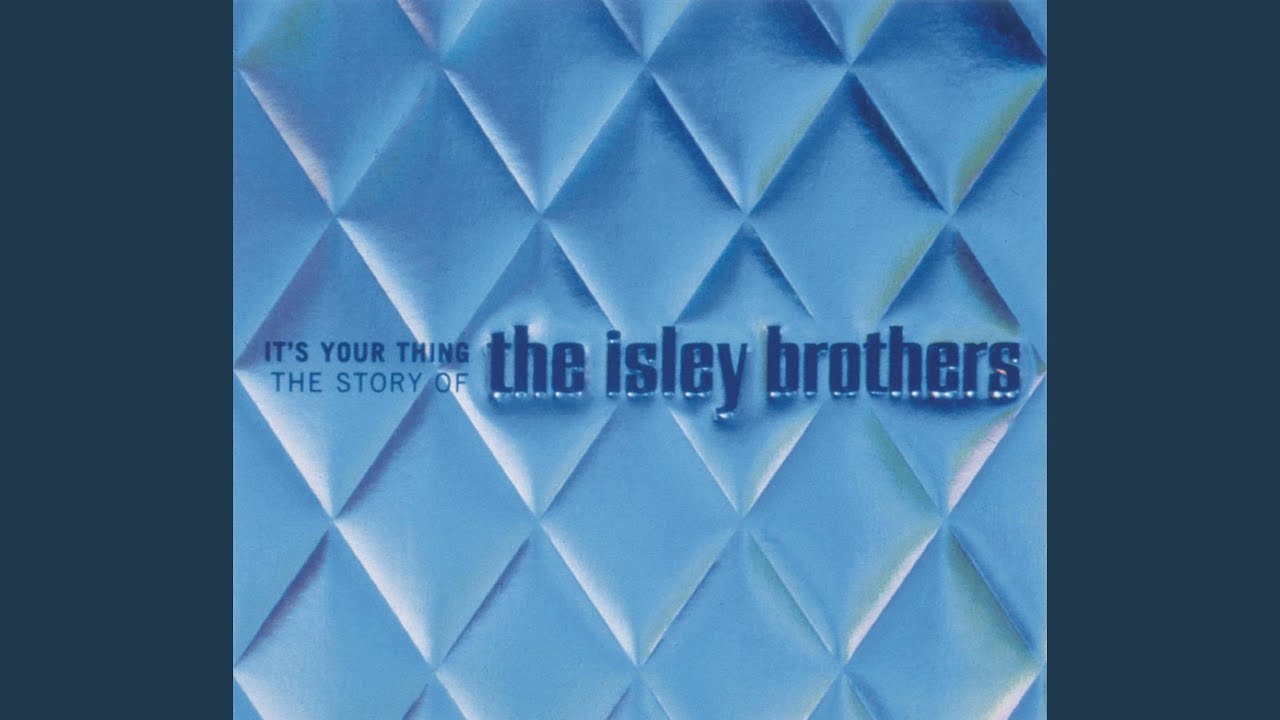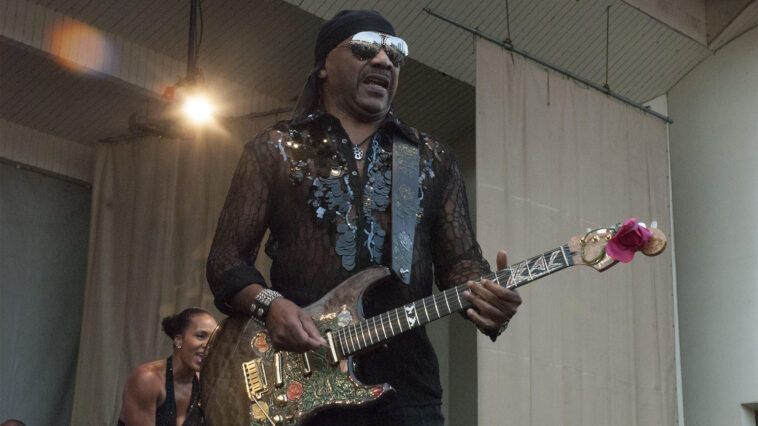When Ernie Isley laid down his fuzzier-than-fuzzy “That Lady” solo in 1973, which appeared on The Isley Brothers’ 1973 record, 3 + 3, people were blown away. So blown away, in fact, that many didn’t believe it was Ernie playing it.
There were rumors that it was an old Hendrix track brought to life, someone else in the band or an unnamed session player.
Few could believe that Isley, just 19 at the time, had played the song’s blistering solo. At the time he’d done little more than play bass guitar on Isley recordings like “It’s Your Thing.”
Once the shock and awe wore off, people understood that Ernie was a guitar hero in the making. “That Lady” added a new signature element to R&B that made players and listeners stop and take notice.
“We changed everybody’s perspective,” Isley tells Guitar Player.
Despite a lack of media attention, Ernie earned his place at the six-string table.
“It helped me bogart my way into the room with Jimi Hendrix and Carlos Santana,” he says. “Nobody knew who I was. They just said, ‘Whoever that is, that’s true guitar playing.’”
“That Lady” had an unusual history. The song was written by Isley brothers Rudolph, Ronald and O’Kelly Jr. (a.k.a. Kelly) in 1964 as a take off on a classic R&B song in the style of the Impressions. Titled “Who’s That Lady,” it failed to chart.
In 1973, the group decided to revamp it in a funk-rock style suited to the times. Retitled “That Lady,” the song reached number six on the Billboard Hot 100 chart and two the R&B chart. Ernie figured he’d get a bit more attention from his work on the track, but it didn’t go down that way at first.
“I thought that the sky was going to open in terms of the guitar world,” he says. “But we had other records after that.”
Since then, Ernie has received his due from artists ranging from Paul McCartney to Kendrick Lamar, who sampled the song for “i,” which appears on his 2025 record, To Pimp a Butterfly. “We’ve still had our music out in front of the audience,” Isley says. “That’s the most important thing.”
“They embraced it, eventually. They didn’t put me on the magazine covers—but they were listening, and we knew that, so it was fine.”

I’ve heard that your first take on “That Lady” was a blazing solo, but you were unhappy with it. Plus, you had to redo it because there was no room left for the vocals.
I wasn’t unhappy with it; I was ecstatic! I had never played like that or sounded like that. It shocked me. And it shocked the engineers, and all of my brothers were kind of comatose. [laughs] My eldest brother, Kelly, was staring through the glass at me for, like, 45 minutes without blinking.
He was that blown away by the solo?
It was, like, between Earth and Mount Olympus — a guitar instrumental. But that’s right, we didn’t have any room for the vocals.
So that was the very first take, and the second take is what’s on the record. [The single featured an extended three-minute solo on side two, for a total length of more than six minutes; the album’s version, which lasted 5:35, includes roughly two and half minutes of soloing.]
How did you feel about that second take?
The first take was better. At first I didn’t like the second one, but when I heard it a few days later, I was glad that they didn’t erase it.
Is it true that Bill Withers heard your playing and was also blown away?
You know, we had some folks stop by the studio while we were recording, and one of the people who came by was Bill Withers. It was as we were recording, you know, working on the album [3 + 3]and it was decided that we’d play “That Lady” for him. The engineers put it on and cranked it, and from the time that it started, Bill was literally, physically backing up till his back was against the wall.
Bill liked your playing too?
When the guitar— the lead guitar — hit that first note, his eyes got big as dinner plates. We played it all the way through, and when it finished, he was like, “Man, that is a monster of a record! How’d you get that guitar sound?”

How did your record label feel about “That Lady” after they’d heard it?
We played it for them for the first time, and they said, “Well, this doesn’t sound like ‘It’s Your Thing.’ It doesn’t have saxophones or trumpets, but we like it. The only thing is, how should we present it to the marketplace?” We had elements of R&B, dance and a guitar sound that was unusual, and that wasn’t R&B-sounding. They said, “You know, that’s rock. How should we promote this record?”
What did you tell them?
We were just like, “You know, just put it out like it is, and it’ll go wherever it goes.” And when they put it out, and it went everywhere on every format. We sort of changed the sound or the look of what was possible with R&B, because it didn’t sound like R&B.
Is it true that people were shocked that it was you playing, and some even thought it was Jimi Hendrix?
A lot of people said, “That’s Jimi Hendrix, isn’t it?” We said, “No, it’s not Jimi.”
They said, “Well, didn’t Jimi live with the Isley Brothers for about two years? And didn’t he play on songs like ‘Testify?’”
“Yeah, he did.”
“So if that’s not Jimi, who is that?”
“It’s my brother, Ernie?”
They said, “Ernie?! Where’d he come from?” People didn’t know I’d been around all the time, playing bass on “It’s Your Thing” and playing guitar here and there.
What gear did you use while recording “That Lady?”
I was playing a Strat, which was my guitar. And I was playing with a Big Muff fuzz box, a Maestro phase shifter and a Fender Twin amp. And that was pretty much it!
Was Jimi Hendrix an inspiration for you, or were you trying to channel him in any way?
No. I went into the music store and heard this Big Muff pedal, and I’d never heard anything quite like that before. I went into the studio that night and told them, “I gotta get this pedal.”
We were working with the same engineers who were working with Stevie Wonder on Innervisions [Malcolm Cecil and Robert Margouleff]. And they said, “Whatever you’re talking about, we can get from Studio Instrument Rentals.” And they got it the next day, and that was when I played the song for the first time. They lost their minds on the first listen. And nobody else really sounded like that but me.
When you look back on “That Lady,” do you think you’ve gotten your due for more or less creating that sound?
People talk about what they want to talk about. None of the magazines at the time said anything about me or featured me in any articles. None. And that was kind of weird because everybody was listening here, you know, everybody heard that record. It got a lot of attention, but I was not necessarily acknowledged. But that’s all right, because we sold —and are still selling — tons of records with it and because of it.
